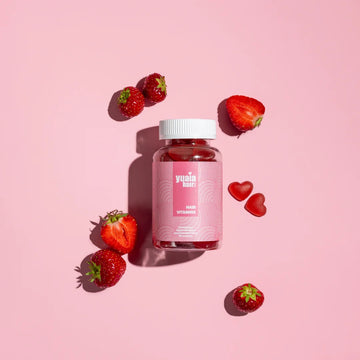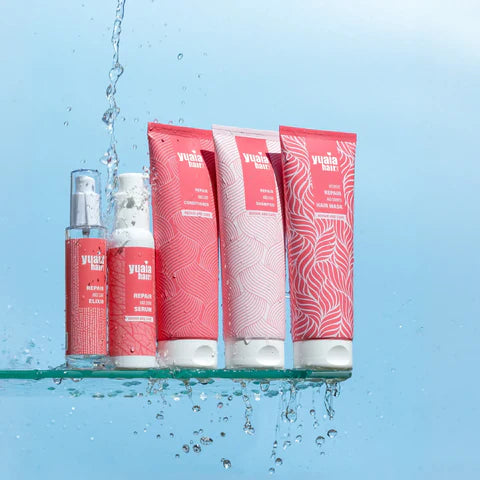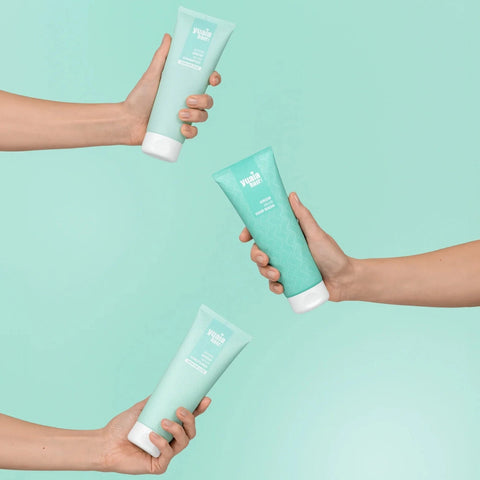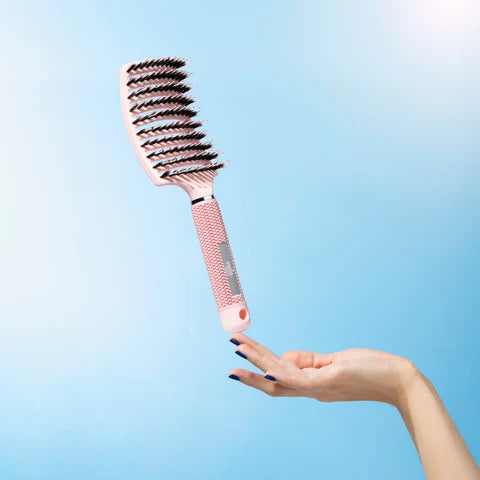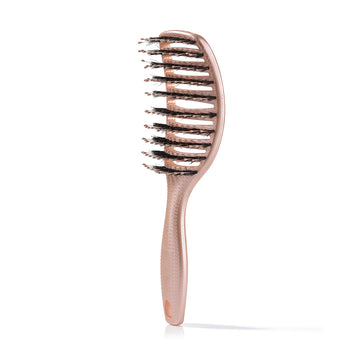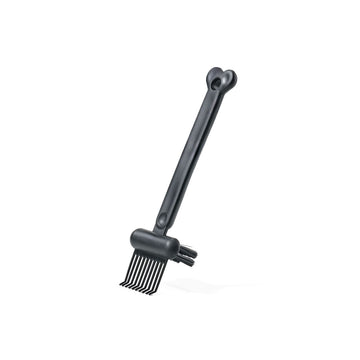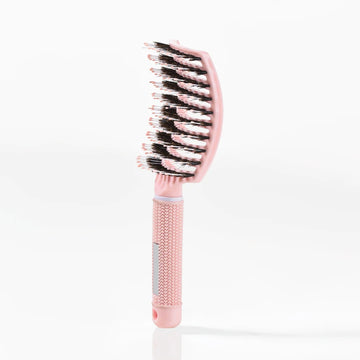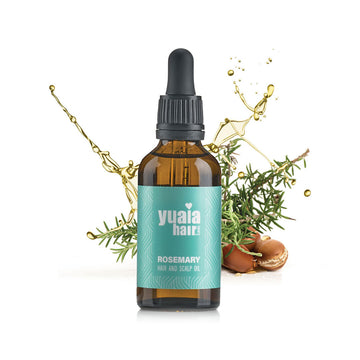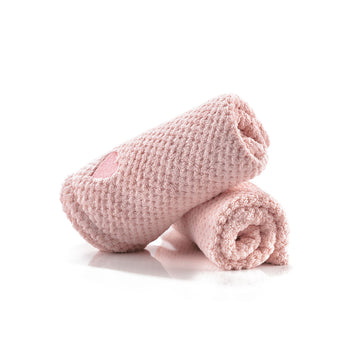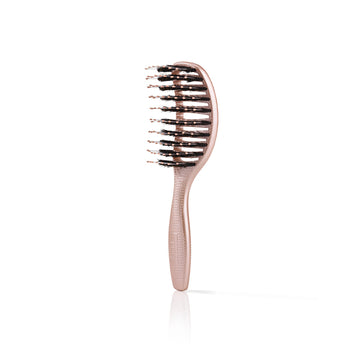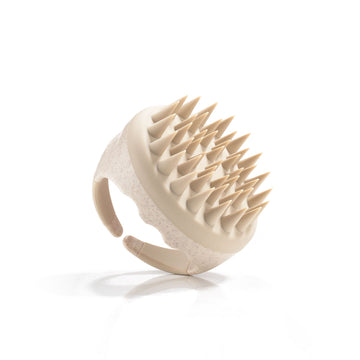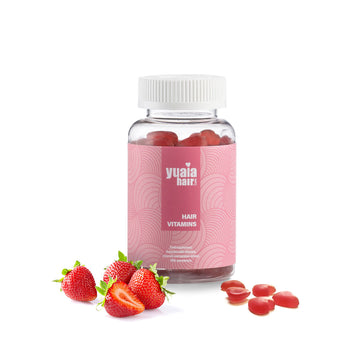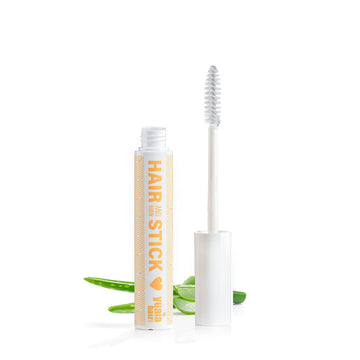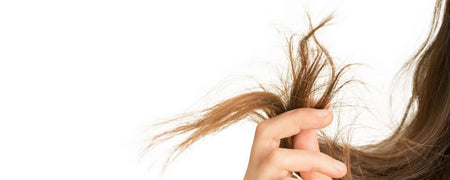What are split ends?
Well, what exactly are split ends? Specifically, it is when the ends of the hair have naturally split due to some form of damage. The ends of the hair shaft are thus also the oldest part of the hair and also often the part of the hair that has been exposed the most. However, split ends can occur anywhere on the hair and not just at the tips. There are 3 common types of split ends.
What do split ends look like?
Split ends can have many different shapes, which we'll try to cover here. Otherwise, here is an illustration of what a split hair can look like:

Normal fork-shaped cleavage
This type of split ends is the most common, where the ends of the hair strand are split, so it has the shape of a fork. This form is most common and also represents the early stage of split ends. If you notice this type of splitting in your hair, it may be a good idea to address it now to save as much of your hair as possible.
Branched splitting of the hair shaft
If your hair strands look like the crown of a tree with a lot of branches, this is an indication that one side of your hair strand is more damaged than the other side. This type of split also often means that those hairs are quite damaged and need a lot of love to get them back on track.
Knots on the hair shaft
Sometimes the hair can also form knots. This means, for example, that it has a significantly greater risk of breaking when you brush it. It can often be people with curly or very tangled hair who can experience this.
Why do I get split ends?
Now that we know a little about the different types of split ends, let's take a closer look at why you get split ends. There are many different reasons, but basically, split ends occur because your hair is damaged to some degree. We will take you through some of the most common causes of split ends.
You wash your hair too often
Do you wash your hair every day? Do you just love the lovely clean feeling when you've had a shower? Your hair may not. If you wash your hair too often, it can be one of the reasons why you get split ends.
When you wash your hair with products that contain sulphate, the hair loses its natural oils, which is very bad. Sulfate is a cleaning agent that can easily be dispensed with. Often it is far too harsh on the hair, but it gives that instant 'clean' feeling and makes the shampoo lather a lot. It can of course be fine in appropriate amounts, but if it happens too often your hair will become dry and frizzy , as the scalp cannot produce enough natural oils for your hair. The lack of moisture in the hair can therefore lead to dry hair, which has a greater risk of breaking or splitting.
If you struggle with split ends, it may be a good idea to cut down on the frequency of your hair washes and choose a sulfate-free shampoo that is milder on your hair and scalp.
Bleaching or chemical treatments of the hair
Bleaching or chemically treating your hair contributes to drying out your hair, which can cause your hair to become damaged and more prone to split or break. It can be especially problematic if done incorrectly or too often. Every time you bleach or chemically treat your hair, the hair structure is weakened, making it more susceptible to developing split ends and other damage. Chemical treatments are tough on your hair and should be done with much consideration and planning.
If you are considering a chemical treatment, it may be a good idea to supplement with moisturizing products and regular hair masks to minimize damage and prevent split ends. If you want to know more about this topic, you should check out our blog post on hair bleaching here.
No regular haircuts
Are you one of those who gets a fright when you just go in for a trim and suddenly lose 5 cm? Although it can be tempting to avoid frequent haircuts, it is one of the most effective ways to prevent split ends. To avoid split ends, you must overcome your fear and regularly get your ends trimmed. When hair splits, the damage spreads along the hair strand, making it even more damaged if it is not trimmed in time.
Here, it can be a good idea to inform your hairdresser about your plans for your hair so they know exactly what the purpose of the visit is. We recommend getting your ends regularly trimmed every 3-4 months. Often, just a few millimeters or 1-2 centimeters are enough.
There is no doubt that your hair will thank you for it, as the hair becomes stronger when some of the damaged hair is cut off. Additionally, you have control over the length of your hair. If the hair is very damaged and split, it can break uncontrollably, and it is an unpleasant surprise to discover suddenly.
Heat and direct sun
The weather is often a culprit of split ends. Especially the sun's rays can be harmful to the hair as UV rays break down the hair's proteins and dry out the hair strands, making them more prone to developing split ends. Checking the weather forecast can be a good idea.
If there is a lot of sun, it may be an idea to minimize the hair's exposure to the sun or use UV protection for the hair. UV protection can help shield the hair from harmful rays, just as you protect your skin with sunscreen. By minimizing the impact of the sun, you reduce the risk of drying out and split ends.
You are using too much heat styling
Is the flat iron or curling iron your best friend? Then maybe you should look for a new friend. Excessive use of heat styling with high heat can have a negative effect on your hair's overall health, especially if you do not use heat protection on your hair. It can often result in dry and damaged hair, which significantly increases the risk of both split ends and hair breakage. It may also be advantageous to adjust the temperature of your styling tools to a lower heat when possible.
The wrong hair products
Split ends can also occur if you use the wrong hair care products. If you have dry hair and use an entirely wrong shampoo and conditioner, you can actually end up damaging your hair more than benefiting it. Dry hair needs moisturizing products that can provide the necessary moisture and nourishment so that the hair does not become even more fragile and split.
Therefore, it is very important to find hair care products that match your hair type to avoid split ends.
A little tip is to avoid sulfate-based shampoos, as they can often contribute to drying out the hair and scalp.
Chlorinated water or salt water
Chlorinated water and saltwater are not your hair's best friends. These types of water can dry out the hair massively as they remove the natural oils that protect the hair from becoming fragile. It wears on the hair and requires the right care to avoid split ends or dry hair in general.
Why is it important to avoid split ends?
Split ends are the hair's way of signaling to you that it is not thriving and needs help. If split ends are not treated in time, they can spread further up the hair strand, making the damage worse, resulting in a larger part of the hair needing to be cut off. Therefore, it is very important to listen to your hair's signals before the problem grows.
Often, split ends are a sign that the hair lacks care and moisture to return to a normal state. When split ends first occur, they can also lead to other hair problems like broken hair and frizz, making hair harder to manage and less healthy in appearance. Fortunately, there are several treatments for split and dry hair that we will provide you with shortly!
Which hair types get split ends most easily?
Split ends, also known as split ends, most commonly occur in hair types that are exposed to certain stresses or have certain characteristics. Here are the most common hair types and circumstances where split ends often occur:
- Dry hair: Hair that is naturally dry or exposed to drying factors such as frequent use of heating appliances (hair dryers, straighteners, etc.), chemical treatments (colouring, perms, etc.), and environmental influences (sun, wind, cold air) are more likely to develop split ends.
- Long hair: The longer the hair, the older and more worn it is, especially towards the ends. This makes long hair more vulnerable to splitting.
- Curly or wavy hair: This hair type tends to be drier than straight hair because the natural oils from the scalp have a harder time travelling down the hair shaft due to the structure of the hair. This makes curly and wavy hair more susceptible to split ends.
- Chemically treated hair: Hair that is regularly coloured, bleached or permed is often weakened and prone to damage, leading to split ends.
- Fine hair: Fine hair is less robust and can break and split more easily than thicker hair.
To prevent split ends, it's important to care for your hair properly, use appropriate hair care products, avoid overuse of heaters and chemical treatments, and ensure regular trimming of the ends.

Is it possible to repair split ends?
Unfortunately, no. Once the hair is split, there is no way back other than to cut off the split ends.
There is no real miracle cure to fix split ends - the best thing you can do is to prevent them. Although many products promise to "repair" split ends, they can only temporarily improve the appearance by sealing the hair but cannot actually restore the hair's structure. The only real solution is to cut off the split ends so that the hair does not split further up the hair strand.
Good prevention of split ends is to focus on providing the hair with a lot of moisture and care.
Our best advice for you with split ends
Now we finally get to the exciting part: what you can do to reduce split ends. We've collected all our best advice here. There are both recommendations for products, but also tips for your hair care routine that can make the difference in the fight against split ends. Read along here!
Get new shampoo and conditioner
Among the causes was using the wrong hair care products for your hair. It may therefore be very good to look out for just that. If you often experience split ends, dry hair, or static hair, you can benefit from finding a shampoo and conditioner that contain a lot of moisture and care.
Additionally, it can be advantageous to find sulfate-free shampoo and conditioner. Sulfate-free products will help maintain the hair's moisture and reduce the risk of drying, which is essential to avoid split ends.
With this, you have taken a very good first step toward reducing your split ends. By choosing products that better suit your hair type and needs, you can effectively prevent further damage and help your hair remain healthy and strong.
Try a protein hair treatment
Protein treatments for the hair are very good at repairing your hair. Proteins help strengthen the hair by restoring the proteins that the hair loses through styling, coloring, and other damaging processes. If you get a protein treatment at a hairdresser, it can quickly become an expensive affair. Fortunately, there are many good products on the market that provide a great alternative if you want to do it at home.
We highly recommend our Grow and Glow hair mask, which contains hydrolyzed wheat protein, keratin, and many other fantastic ingredients that nourish your hair to the maximum. Hydrolyzed wheat protein helps strengthen the hair's structure, while keratin repairs damage and restores elasticity. By regularly using a protein-based hair treatment, you can strengthen your hair strands and prevent split ends from occurring.
Take care of your hair when it is wet
We can almost not say it enough times, but you should really take care of your hair when it is wet, especially if you tend to have dry and split ends. When the hair is wet, it is even more fragile, and you can easily damage it. Therefore, be careful not to comb your hair too much when it is wet and make sure it is dried gently. We recommend our microfiber towel for the hair, which has an effective absorbency.
Make sure your hair is dry before using heat styling
If you plan to style your hair, it is very important that you ensure your hair is dry, and preferably clean. If there is moisture left in the hair or if you have left conditioner in, you risk damaging the hair further with heat styling. Heat styling on wet hair can result in severe damage as the water in the hair heats up and creates steam, which can lead to burnt or split ends.
The same applies to various serums or sprays for the hair – they should ideally be applied after you have used heat styling. Serums and styling products that are not heat protective can also damage the hair if exposed to high heat. However, if they are heat protective products, you should, of course, always apply them before using heat styling.
Especially heat protective products are very important when it comes to heat styling, as they form a barrier that reduces heat damage and minimizes the risk of split ends.
Get a haircut regularly
We've already covered it a bit further up, but a regular trim can be worth its weight in gold for your hair, especially if you suffer from split ends. Start by letting your hairdresser know what the purpose is, then you are sure to get a good result. We recommend getting approximately 1-2 centimeters cut approximately every 3 months. You can advantageously ask your hairdresser to use the cutting technique "dusting", so that it does not go too far beyond your lengths.

Make sure your ends get plenty of moisture
When you suffer from split ends, it is often the hair's signal that it is dry and lacks moisture. That's why it's important to add a lot of moisture to your hair and especially your ends. You can use a hair mask approximately once a week, where the hair really gets a lot of care and moisture. It is important to use conditioner after the hair mask, as the conditioner helps to close the hair shaft again and thereby bind the moisture in the hair. You can also supplement with a hair oil to add moisture to the hair as needed. We can highly recommend our Anti Frizz hair elixir, which is a fantastic hair oil that provides lots of moisture and nourishment.
Consider changing your pillowcases
Have you ever thought that your pillowcase can greatly influence your hair? Something so simple can be quite effective. When you sleep on a traditional cotton pillowcase, the fibers are not particularly smooth, which can create friction between your hair and the pillowcase. This friction can cause the hair to wear more, break, or become frizzy - especially if your hair is already dry or fragile.
Conversely, a bamboo pillowcase has smooth fibers, like silk, which means that the hair does not have the same friction against the pillowcase and is thus spared. You will notice a big difference already after the first night, as the hair is no longer exposed to the same wear.
Drink plenty of water
We have talked a lot about external hair care, but sometimes internal care is just as important. Drinking enough water is one of the easiest ways to strengthen your hair from within. When you are hydrated, your body can more easily maintain the moisture balance in the hair, which helps prevent dry hair and split ends.
Hair mainly consists of keratin, but just like your skin, it needs moisture to maintain its elasticity and strength. If you do not drink enough water, the hair can become dry and weak, making it more susceptible to damage such as split ends.
 2-4 day UK delivery
2-4 day UK delivery
 25.000+ satisfied customers
25.000+ satisfied customers
 Satisfaction Guarantee
Satisfaction Guarantee

